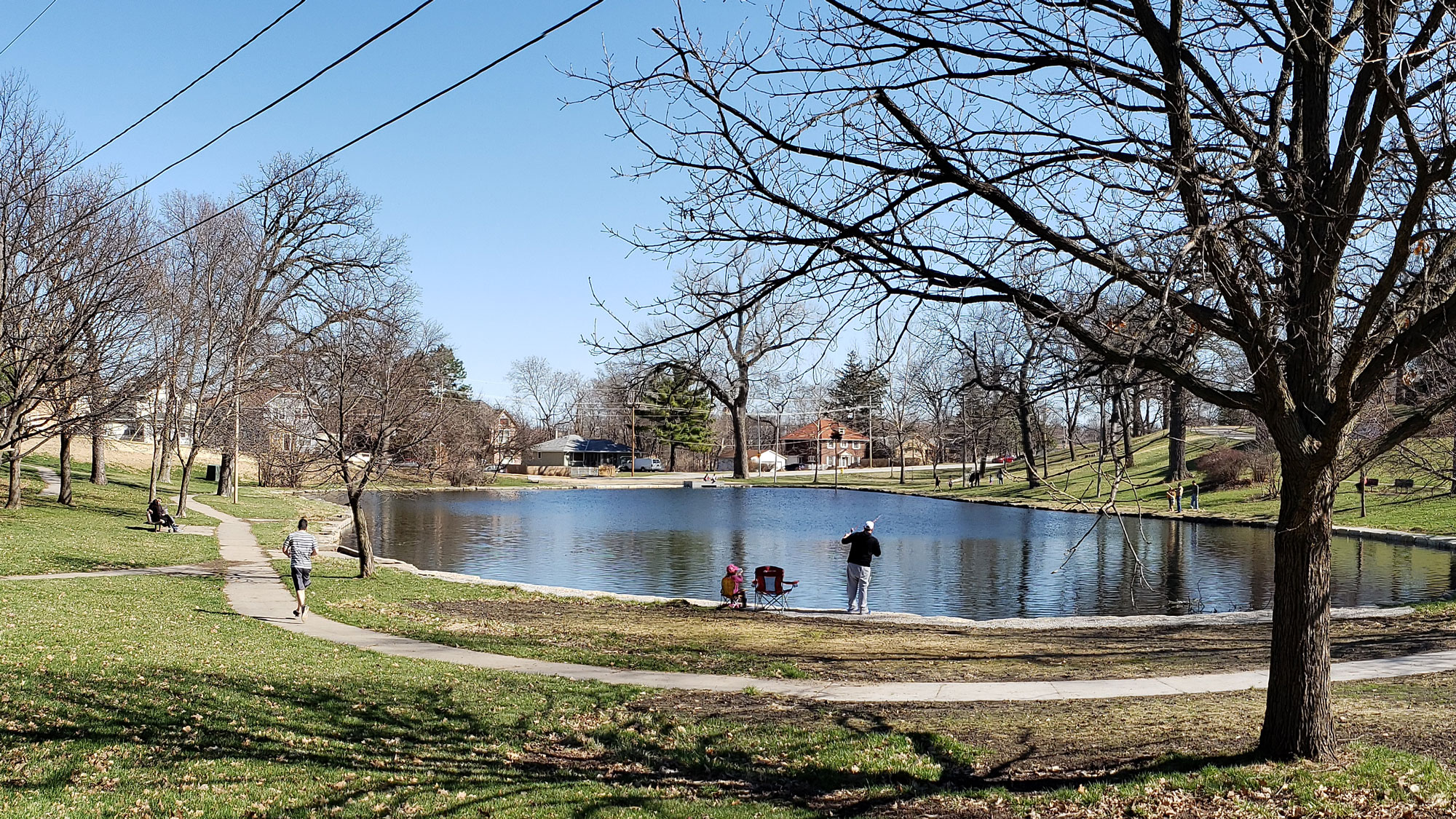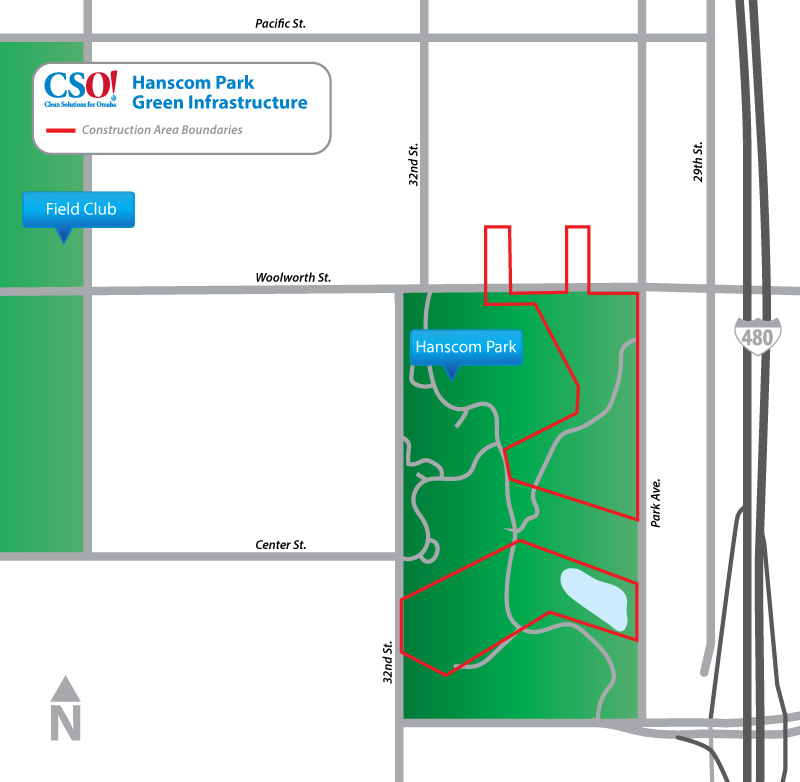Omaha CSO
Skip to content
The Hanscom Park project is located in the Leavenworth Basin adjacent to the intersection of South 32nd Avenue and Ed Creighton Avenue.
This project features green infrastructure solutions to better manage stormwater runoff and increase rainwater infiltration within the park’s natural areas.
Ultimately, this project reduces runoff from the surrounding area that enters the City’s combined sewer system. Stormwater from the park and the adjacent neighborhood to the west was studied to determine how best to convey water to locations in the park where it could infiltrate into the ground. In the southwest corner, water cleansed by green infrastructure features will be used to help maintain water levels in the park’s lagoon. The lagoon will hold stormwater runoff for short time periods during rain events to help reduce downstream flows and sewer overflow volumes. This green infrastructure feature along with the increased infiltration throughout the park will assist the City in meeting the goals outlined in Omaha’s CSO Long Term Control Plan.
Green Infrastructure: Hanscom Park

Hanscom Park, Omaha’s oldest park, was donated to the City in 1872, with park improvements designed in the early 1890s by the noted landscape architect, HWS Cleveland. The 58-acre park includes extensive natural green space, picnic areas, a playground, small informal soccer and baseball fields, an indoor tennis center, splash pool, dog park, lagoon, formal gardens, the City greenhouse, and a pavilion.
The Hanscom Park Green Infrastructure Project utilized man-made features or structures including cascading bioswales, grassed swales, and other above-ground green infrastructure features to imitate actions that otherwise occur naturally. Natural and improved areas of soil infiltrate rainwater where it falls, decreasing the volume and flow rate of runoff into the combined sewer system and improving groundwater quality and quantity. These improvements better manage stormwater runoff and reduce the magnitude, frequency and duration of runoff overflows from the surrounding neighborhoods.
Improvements to the large ravine in the park’s northeast quadrant were designed to enhance and blend with natural, existing conditions and habitats. In the southwestern corner, groundwater cleansed by green infrastructure features is used to supplement water levels in the lagoon. Another stormwater management technique implemented involves storing additional water in the park’s lagoon for short periods of time following large rainstorms. To do so, an automated water level control device was added to the lagoon’s outlet structure, allowing the City to release excess water into the combined sewer system after peak storm flows.
Controlling the release of this water helps prevent sewer overflows and avoids taxing the City’s water resource recovery facility. The device is also used, in advance of forecasted storm events, to lower the lagoon’s water level to increase its available water storage capacity.
Using existing city-owned greenspace, the project allowed for stormwater management, while providing a multitude of recreational uses. At the same time, local neighborhood leaders designed, planned and implemented other, privately funded, non-CSO Program improvements within the park.
Additional Resources

Completed Date
Q1 2020
Cost at COmpletion
$2.3 million
Contact Information
City of Omaha
Gabe Astorino
402-444-5279
Consultant
Tetra Tech, Inc.
Bridget Harper
816-412-1758
Contractor
Heimes Corporation
402-894-1000
Public Facilitator
Big Muddy Workshop, Inc.
John Royster
402-344-8711
Project References
Project Number: OPW 52781
LTCP Project Name: Stormwater Green Projects – Hanscom Park


